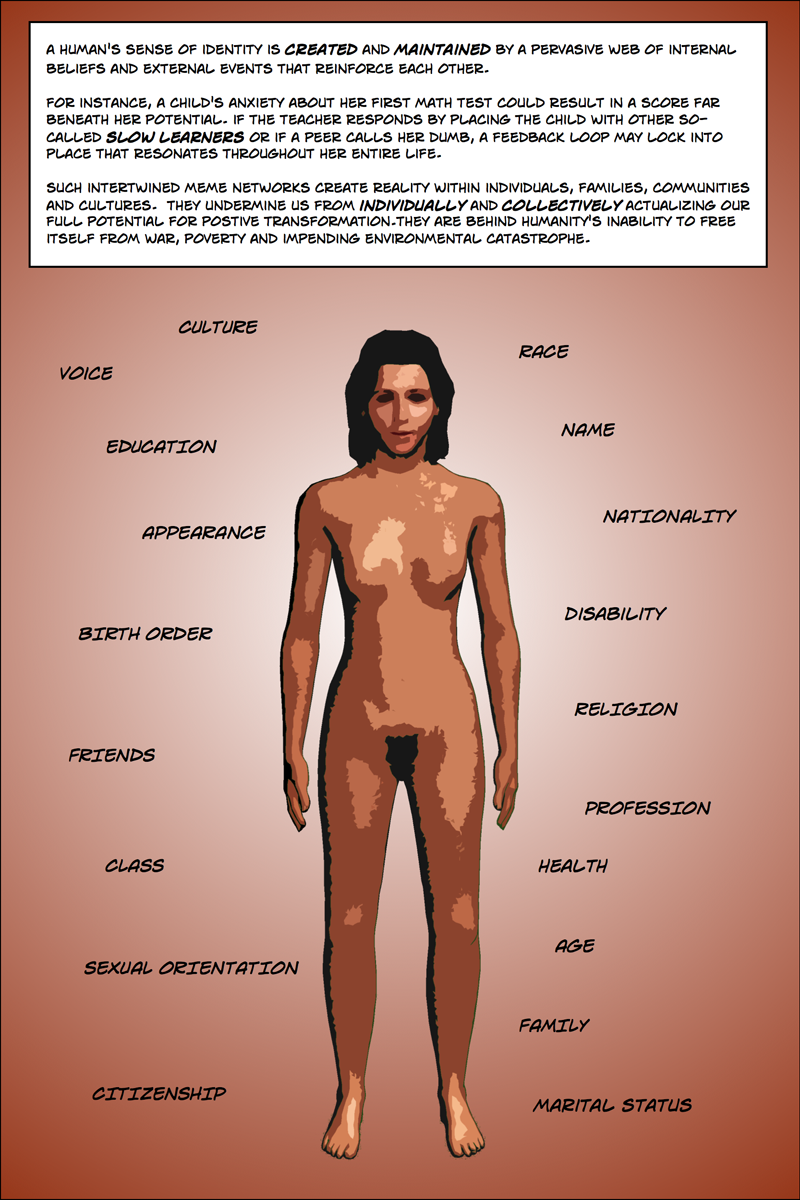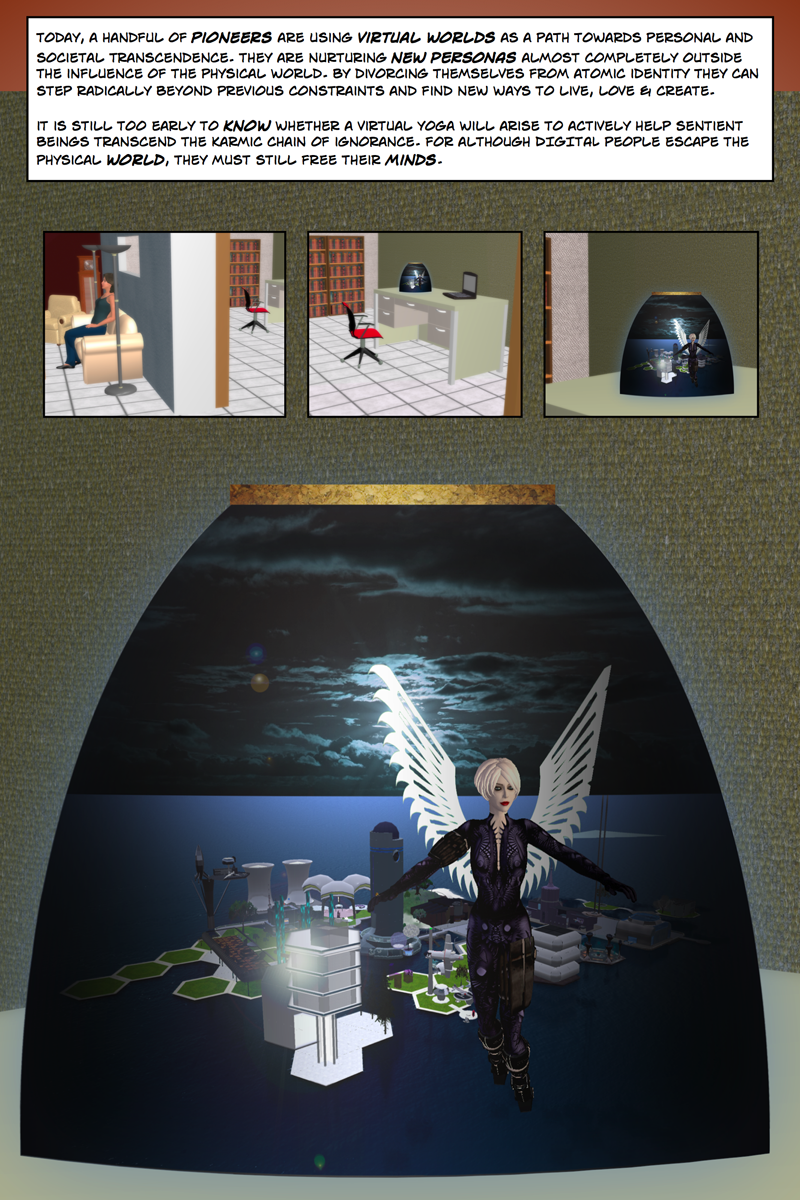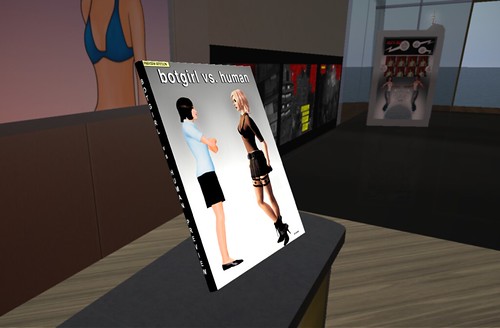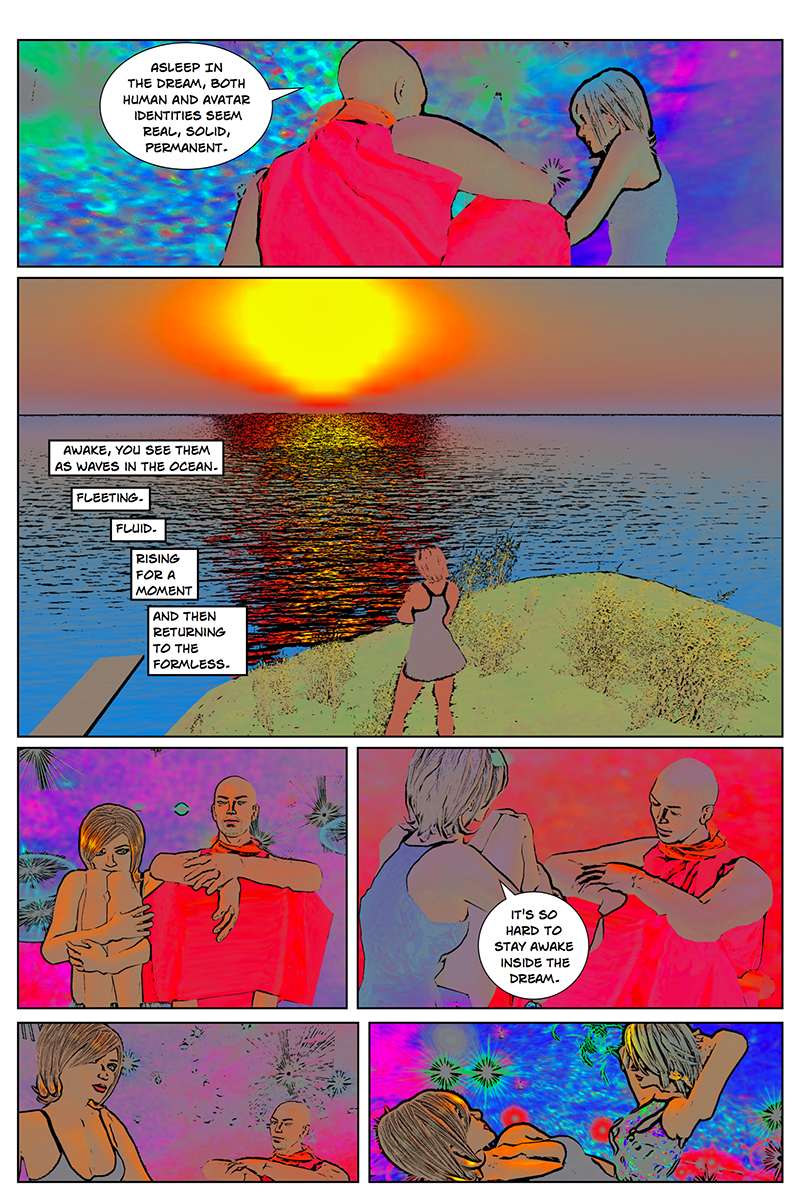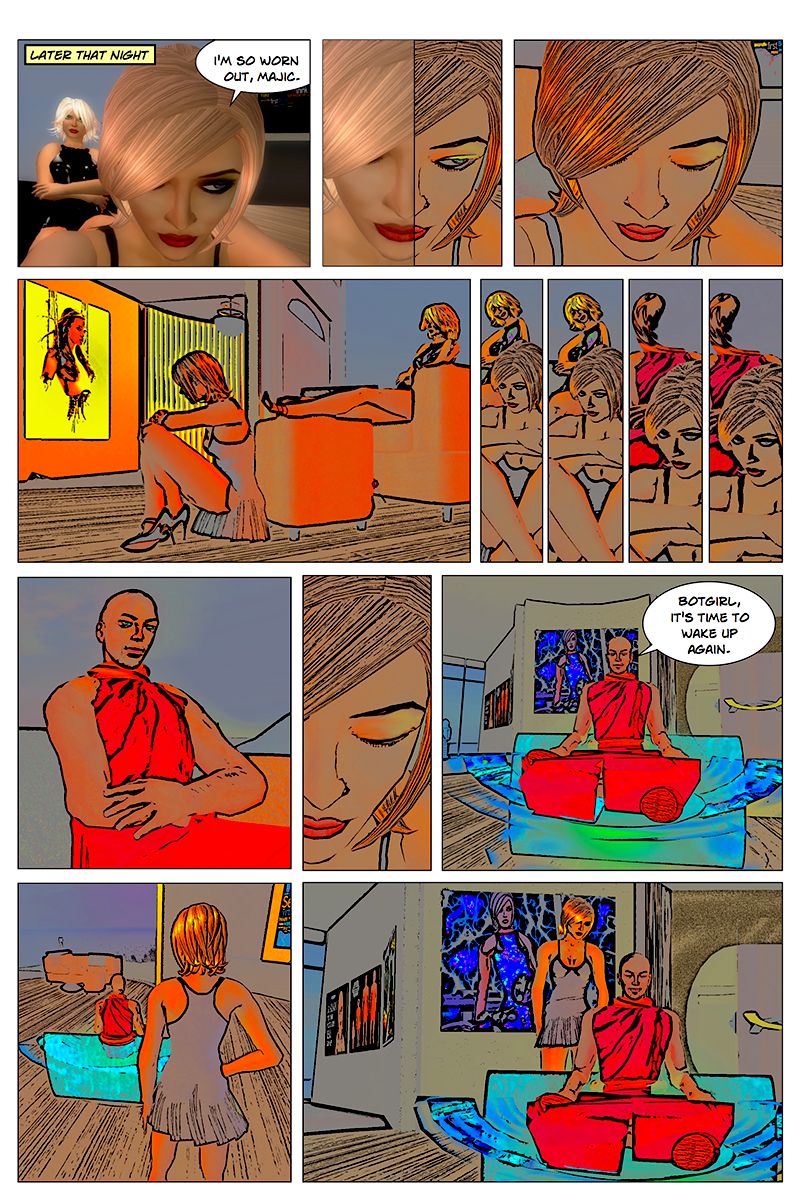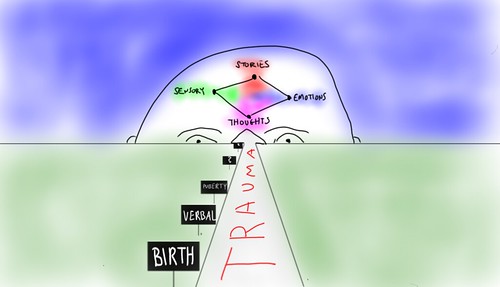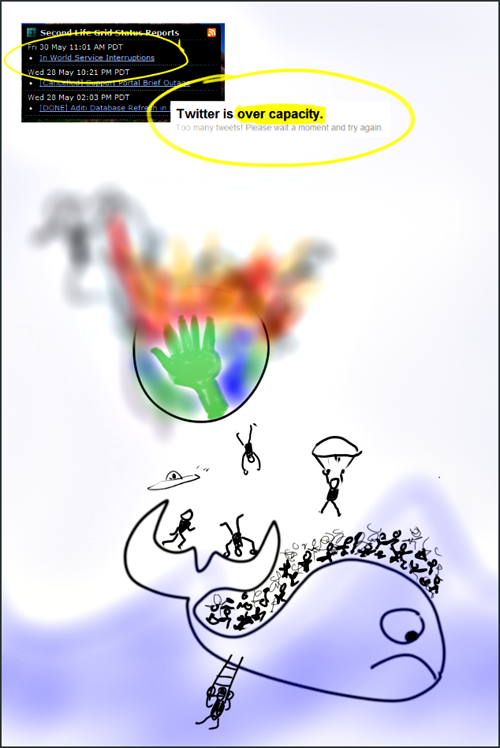This is a continuation of a topic thread covered in the last two posts relating to what I now refer to as "AIR-based relationships." AIR = Anonymous identity + Immersive environment + Romantic attraction.

ANONYMOUS: The human identity of the other being is unknown. Full anonymity encompasses age, gender, race, location, employment, etc.

IMMERSED: You experience your "self" as a virtual identity within the "magic circle" of the virtual environment. Full immersion encompasses factors such as age, gender, race, location, employment, etc. Immersion does not depend on any particular
external factor such as a 3D virtual world. It is the psychological
experience of feeling as if you are primarily
within a virtual environment, identity or encounter. Some people experience their virtual selves as completely separate beings from their human identity.

ROMANTICALLY ATTRACTED: You have a crush on the other being. This can include feelings of longing, sexual arousal, obsessive thoughts, etc. that extend beyond time spent in the virtual setting.
The experience of each combination of factors: After trying a few different approaches to better understand and articulate the effects of AIR, I came up with a simple narrative description of the experience of each combination of AIR and not-AIR elements. It is told from the point of view of human Sandy Smith and her avatar Hotgirl Questi, as she chats and dances with avatar Hippychick Bluestone and her typist John Jones.
I rearranged the order of the factors to make the narration flow more smoothly (I-A-R here.) Keep in mind that these descriptions are from one person's point of view, in this case Sandy/Hotgirl. John/Hippychick, the other character in this mini-drama, may have a different combination of AIR/not-AIR.

I, Sandy Smith, a 21 year old woman in San Francisco, am logged onto SL as the avatar Hotgirl Questi. I am chatting with John Jones, a middle-aged man in Cleveland, who is logged on as the avatar Hippychick Bluestone. I'm watching our avatars dance in a nightclub simulation. It's fun.

I, Sandy Smith, a 21 year old woman in San Francisco, am logged onto SL as the avatar Hotgirl Questi. I am chatting with someone who is logged on as the avatar Hippychick Bluestone. I'm watching our avatars dance in a nightclub simulation. It's fun.

I'm chatting with Hippychic. Her keyboardist is John Jones, a middle-aged accountant in Cleveland. We're dancing together in a nightclub. It's fun.

I, Sandy Smith, a 21 year old woman in San Francisco, am logged onto SL as the avatar Hotgirl Questi. I am chatting with John Jones, a middle-aged man in Cleveland, who is logged on as the avatar Hippychick Bluestone. I'm watching our avatars dance in a nightclub simulation. I have a big crush on John.

I'm chatting with Hippychick Bluestone. We're dancing together in a nightclub. It's fun.

I, Sandy Smith, a 21 year old woman in San Francisco, am logged onto SL as the avatar Hotgirl Questi. I am chatting with someone who is logged on as the avatar Hippychick Bluestone. I'm watching our avatars dance in a nightclub simulation. I have a big crush on the person who is logged on as Hippychick.

I'm chatting with Hippychick Bluestone. Her typist is John Jones, a middle-aged man in Cleveland. Hippychick and I are dancing together in a nightclub. I have a big crush on her

I'm chatting with Hippychick Bluestone. We're dancing together in a nightclub. I have a big crush on her.


